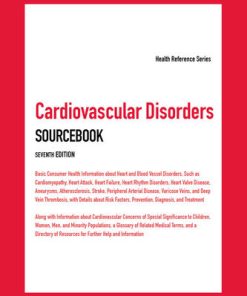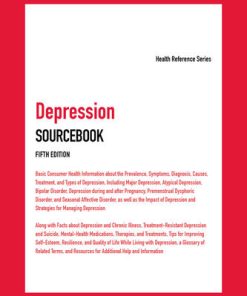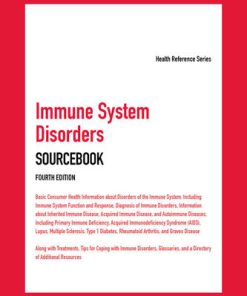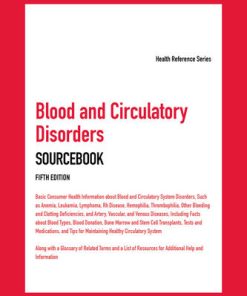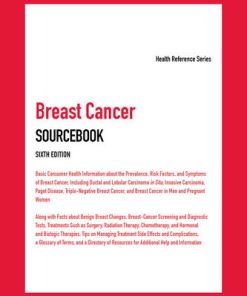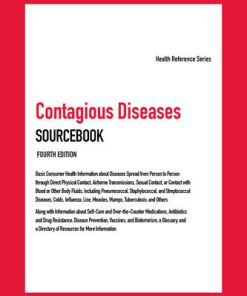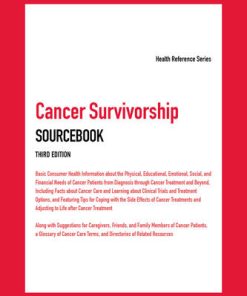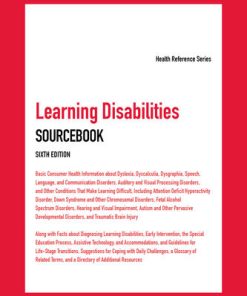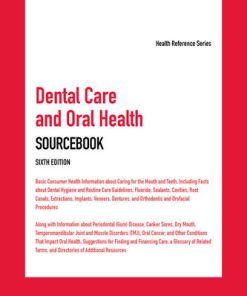PTSD and Coping with Trauma Sourcebook: Health Reference Series Angela L. Williams
$50.00 Original price was: $50.00.$25.00Current price is: $25.00.
PTSD and Coping with Trauma Sourcebook: Health Reference Series Angela L. Williams – Ebook Instant Download/Delivery ISBN(s):9780780817722, 0780817729
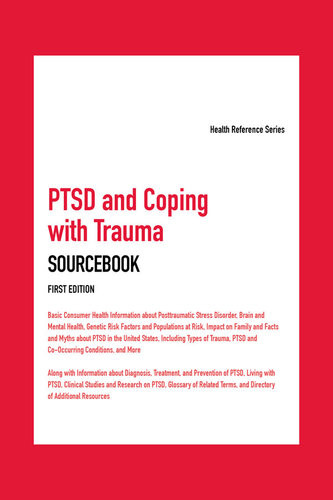
Product details:
- ISBN 10: 0780817729
- ISBN 13: 9780780817722
- Author: Angela L. Williams
Provides consumer health information about posttraumatic disorder, covering topics such as types of trauma, diagnosis and treatment and living with PTSD. Includes index, glossary of related terms, and other resources.
Table of contents:
Chapter 1—The Brain and Mental Health
Chapter 2—What Is Stress?
Chapter 3—What Is Trauma?
Chapter 4—PTSD Basics
Chapter 5—Genetic Risk Factors for PTSD
Chapter 6—Populations at Risk
Chapter 7—PTSD and Its Impact on Family
Chapter 8—Myths and Facts about PTSD
Chapter 9—PTSD in the United States
Chapter 10—Medical Trauma
Chapter 11—Child and Adolescent Exposure to Trauma
Chapter 12—Sexual Assault and Violence
Chapter 13—Impact of Sociopolitical Issues on Mass Violence and Disasters
Chapter 14—Emotional and Psychological Trauma
Chapter 15—Moral Injury
Chapter 16—Physical Abuse
Chapter 17—Toxic Stress and Trauma Associated with Poverty
Chapter 18—The Physical Health Consequences of Trauma and PTSD
Chapter 19—Neurocognitive Problems
Chapter 20—Traumatic Brain Injury and PTSD
Chapter 21—PTSD and Emotional Disturbances
Chapter 22—The Connection between Substance Abuse and PTSD
Chapter 23—Anger and Trauma
Chapter 24—Sleep Disturbance and PTSD: Insomnia and Nightmares
Chapter 25—Psychological Stress and Cancer
Chapter 26—Do You Have PTSD?
Chapter 27—Diagnostic Criteria for PTSD
Chapter 28—PTSD Screening Instruments
Chapter 29—Clinician-Administered PTSD Scale for DSM-5 (CAPS-5)
Chapter 30—Assessment of PTSD with Co-Occurring Neurocognitive Disorder
Chapter 31—Assessing Risk of Violence in Individuals with PTSD
Chapter 32—Treatment for PTSD
Chapter 33—Helping during Treatment
Chapter 34—Play Therapy
Chapter 35—Psychotherapy
Chapter 36—Eye Movement Desensitization and Reprocessing
Chapter 37—Medications
Chapter 38—Stress Management
Chapter 39—Complementary and Alternative Medicine
Chapter 40—How Is PTSD Treated in Children and Teens?
Chapter 41—Telemental Health and PTSD
Chapter 42—Caregivers and Their Role in PTSD Treatment
Chapter 43—Preventing PTSD through Interventions
Chapter 44—Coping with PTSD
Chapter 45—Other Strategies for Coping with PTSD
Chapter 46—PTSD, Work, and Your Community
Chapter 47—Spirituality and Trauma
Chapter 48—Rights, Benefits, and Services for People with PTSD
Chapter 49—Clinical Studies on PTSD
Chapter 50—Brain Biomarkers Could Help Identify Those at Risk of Severe PTSD
Chapter 51—Shared Decision-Making for PTSD Treatment
Chapter 52—Social Acceptance Helps Mental Health after War Trauma
Chapter 53—Patient Engagement in PTSD Treatment
Chapter 54—Meditation-Based Approaches in the Treatment of PTSD
Chapter 55—Exposure Therapy
Chapter 56—Focal Brain Stimulation for PTSD
Chapter 57—Group Treatment for PTSD
Chapter 58—Imaging Pinpoints Brain Circuits Changed by PTSD Therapy
Chapter 59—A Glossary of Terms Associated with PTSD
Chapter 60—Organizations That Provide Help for People with PTSD
People also search:
how to deal with trauma and ptsd
trauma and ptsd difference
ptsd years after trauma
ptsd in simple terms
can trauma cause ptsd
You may also like…
Medicine - Cardiology
Medicine - Immunology
Uncategorized
Uncategorized




